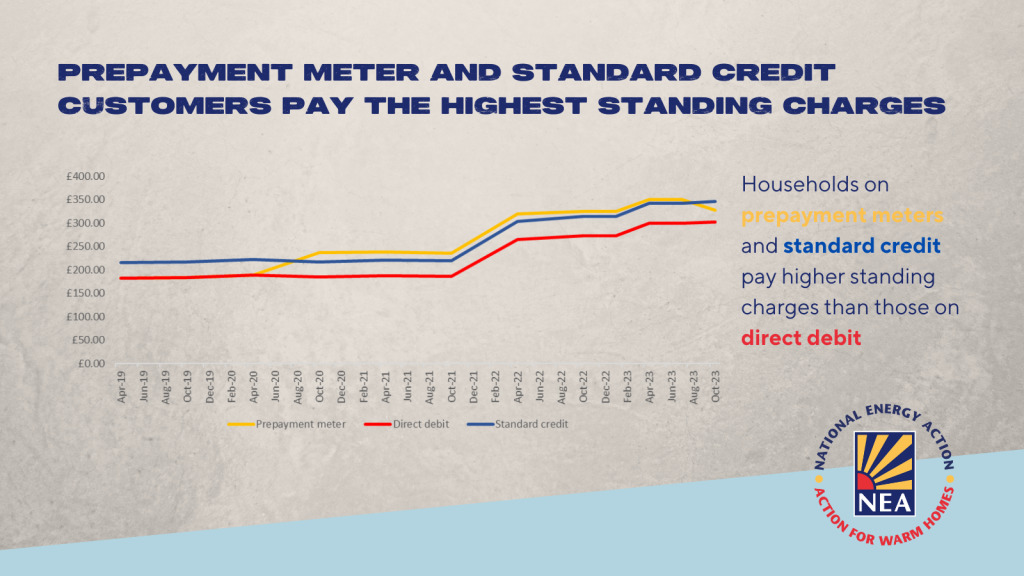On 16 November, energy regulator Ofgem confirmed its intention to review standing charges as energy bills started to rise.
The review will look at how standing charges are applied to energy bills and what alternatives could be considered for consumers. Charities, consumer groups, businesses, bill-payers and energy suppliers all have until 19 January 2024 to respond to the review and provide their input.
Many within the energy industry are “unsurprised” that Ofgem intends to revisit especially with energy bills expected to rise throughout this winter period.
Encapsulating this with their thoughts is Daniel Portis, deputy director of Energy UK, who said: “It is unsurprising at a time when bills remain high, and customers are trying to do all they can to make savings that standing charges are attracting increased debate.
“It’s important to recognise that there is a difficult balance to be struck here, as Ofgem says. Standing charges are capped by the regulator and largely cover fixed costs – those which are unrelated to the amount of energy a customer uses. For example, the standing charge is how we all pay for the infrastructure needed to deliver energy safely to our homes because network charges are included, set by the regulator, collected by the supplier and then passed onto the network companies.”
“These costs are incurred by all customers irrespective of the amount of energy they use. If you were to switch these costs to the per unit charges then those customers disadvantaged by the current system, such as low usage households, would benefit but equally other customers who might be more reliant on energy or have a less well-insulated home could end up paying significantly more – including many on low-incomes as Ofgem’s new analysis indicates.”
Portis added that although energy suppliers have reduced standing charges to support their customers, as witnessed by Octopus Energy last year, “the price cap on the unit rate leaves suppliers very little scope to offer tariffs with low standing charges”.
Concluding his thoughts, Portis said: “Ofgem therefore needs to examine this in detail and introduce any eventual changes with care to ensure that customers in the most difficult situations are still protected. As we’ve said, this issue has been brought to a head because energy bills remain high and it underlines the need to put targeted support in place for those customers in most need this winter and beyond.”
OVO and Octopus: regulatory change is needed to slash standing charge
Elsewhere, energy suppliers OVO Energy and Octopus Energy both provided thoughts on the review. Unsurprisingly both flagged that the standing charges have “become way too high” and that regulatory change is required to change this and help customers.
Greg Jackson, Founder of Octopus Energy said: “Standing charges have become way too high and we need regulatory change so we can slash them. They disproportionately affect people on low incomes and make it hard to save money by reducing energy use.
“It’s not right that a meter can rack up hundreds of pounds a year even when the customer is hardly using any energy. Indeed, people on prepay sometimes have to top up when they’ve used nothing.
“Until we get regulatory change, Octopus will still continue to do what we can to keep standing charges as low as possible for all customers. We’ve already absorbed tens of millions of pounds on behalf of our customers by keeping them below the price cap and have given tens of thousands of customers standing charge holidays.”
Adding to Jackson’s thoughts, Raman Bhatia, CEO of OVO, said: “Ofgem’s commitment to open the conversation on standing charges is extremely welcome. These unfair and unpopular charges penalise those who are trying to be more energy efficient and save money.
“There is widespread consensus that standing charges need to be reformed. We must act now to make sure customers are treated fairly.”
Standing charges rise by over 65% on average since 2019
Fuel poverty charity National Energy Action (NEA) has also weighed in on the announcement providing more of context for vulnerable customers in the UK. Interestingly, the provide a startling statistic revealing that since April 2019, standing charges have increased by over 65% on average.

This showcases the scale of the issue and why Ofgem is now reviewing standing charges.
“For years, there has been growing alarm about increases to standing charges,” said Peter Smith, director of policy and advocacy at NEA.
“Many people rightly feel they are now too high, and the current approach is unfair. How can it be right that someone who can’t afford any energy for their home, still pays a daily charge that is the same or more than someone in a mansion? An overhaul of the system is long overdue.
“Standing charges aren’t just a matter for the energy suppliers or the energy regulator. How much people pay is often due to government policy. If there was the political will to prioritise these issues in the Autumn Statement, the UK government could cut standing charges to zero for prepayment customers this winter.”
He concluded: “This would particularly benefit those who are more likely to have missed out on support last winter like the £400 discount Energy Bill Support Scheme and who are much more likely to in debt or struggling now to afford their bills. In the longer term, more policies should be paid out of taxation and Ofgem should be encouraging suppliers to reflect a customer’s usage when they recover these charges, or a customer’s payment method, which fuels they use, or their ability to pay.”






